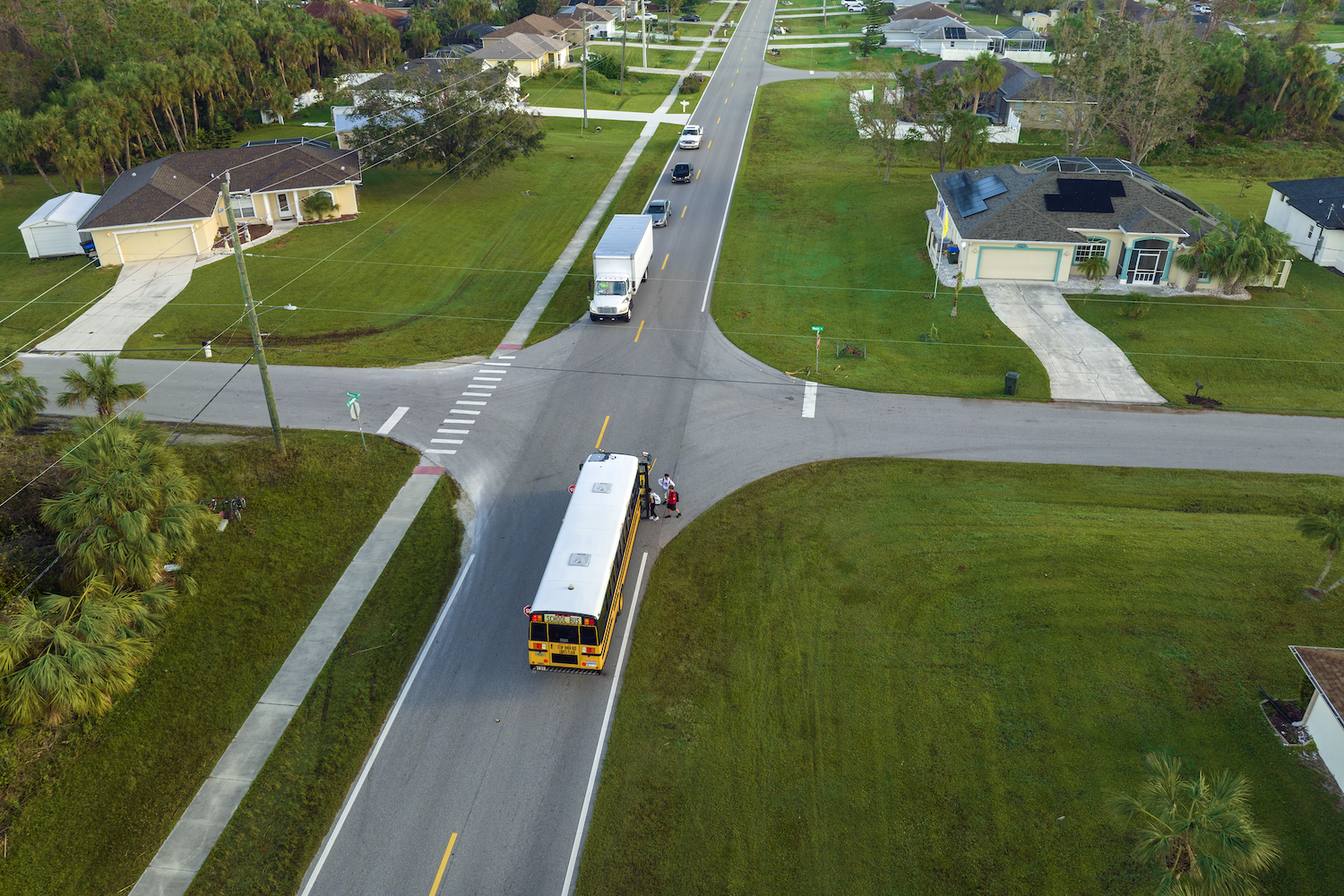In recent years, cyberattacks have shut down rural hospitals, forced kids out of classrooms, and stolen government food assistance from families. These aren’t isolated incidents—they’re systemic failures that exploit the resource gaps created by decades of policy choices that left rural infrastructure vulnerable. This pattern has a name: rural communities often fall below what’s called the Cyber Poverty Line, not able to afford basic cybersecurity protections.
The key distinction is this: rural communities are not behind—they are underserved by infrastructure and public policy. Urban-rural disparities in cybersecurity, like in other policy areas, reflect historical patterns of underinvestment in rural infrastructure and institutions, not inherent limitations of rural communities themselves. Existing cybersecurity policies often fail rural America, leaving communities unable to afford the same level of protection that others take for granted. As the federal government shifts more cybersecurity responsibilities to state and local levels—through efforts like the State and Local Cybersecurity Grant Program (SLCGP) and Executive Orders—it’s critical these transitions don’t leave rural communities further behind.
National security starts at the local level, and right now, our rural frontlines are exposed.
This disparity is also a national security issue. National security starts at the local level, and right now, our rural frontlines are exposed. Food production, energy distribution, transportation networks, and emergency response systems all have rural components that, when compromised, affect everyone. When a rural hospital closes, nearby urban hospitals get overwhelmed. When a rural water system fails, it disrupts agriculture and public health. When hackers steal EBT benefits in Tennessee or Oklahoma, the economic strain travels far beyond those state lines.
Rural communities are home to 46 million people—14% of the U.S. population. That’s nearly one in seven Americans. Contrary to “decline” narratives, rural counties grew by 134,000 residents between 2023 and 2024, mainly due to relocations and in-migration. When these rural attacks succeed, the effects ripple through interconnected networks that serve urban areas too. We are all connected.
Lack of cybersecurity protections is a resource gap, not a readiness gap.
Cyber and security exclusions from rural communities is not a result of apathy or ignorance. Lack of cybersecurity protections is a resource gap, not a readiness gap. When we understand this difference, we can design solutions that build on rural communities’ existing strengths rather than assuming they lack capacity.
What Is the Cyber Poverty Line?
The term “Cyber Poverty Line” describes the threshold below which organizations cannot afford basic cybersecurity protection. Coined by cybersecurity expert Wendy Nather in 2013, it serves as a crucial bridge between technical cybersecurity discussions and practical policy solutions. Like economic poverty lines that help policymakers understand and address financial hardship, the Cyber Poverty Line helps us measure and address digital vulnerability. This framework identifies four critical resource gaps: insufficient funding for security tools, lack of cybersecurity expertise, limited technology capabilities, and minimal influence to secure outside help. In rural communities, these four resource gaps are even more pronounced. Organizations operating below the Cyber Poverty Line in these areas face heightened challenges across the board:
- Underfunded Security: Tight budgets mean rural communities can’t afford essential cybersecurity tools, leaving them open to threats wealthier entities can block.
- Lack of Cyber Expertise: With few skilled professionals available and the inability to attract a new workforce, rural groups struggle to build and maintain secure systems.
- Outdated Tech: Aging infrastructure and slow connectivity prevent timely updates and effective threat responses.
- Limited Clout: Without visibility or influence, rural advocates often miss out on support from government, private, or nonprofit cybersecurity initiatives—deepening the digital divide.
When organizations fall below the Cyber Poverty Line, they become systematically vulnerable to cyber threats that better-resourced entities can deflect or recover from quickly.
When organizations fall below the Cyber Poverty Line, they become systematically vulnerable to cyber threats that better-resourced entities can deflect or recover from quickly. This term matters because it explains why essential services in rural communities become uniquely vulnerable. When a hospital, school, water system, or government office in a rural area gets attacked, there often isn’t a backup option. Unlike urban areas with multiple hospitals or redundant systems, rural communities frequently operate with single points of failure. When these critical services go offline, entire communities lose access to healthcare, education, clean water, or government services that people depend on for daily survival.
Just as public health experts use “food insecurity” in research while understanding communities talk about being hungry, we need to bridge technical policy language with the lived reality of cyberattacks on essential services.
In my experience working across Capitol Hill and rural communities, the Cyber Poverty Line helps non-technical policymakers understand why certain communities face disproportionate cyber risks—but rather than debating terminology, which happens too often in our field, we should focus on addressing structural inequities. When I’m in policy settings, I use this measurable threshold to allocate resources. When working directly with rural communities, I don’t use academic terminology because people say “The hospital’s computers went down and they couldn’t treat my dad,” not “we’re below the cyber poverty line.” Just as public health experts use “food insecurity” in research while understanding communities talk about being hungry, we need to bridge technical policy language with the lived reality of cyberattacks on essential services.
Rural America Is Not Behind—It’s Underserved
Before diving into cybersecurity challenges, it’s important to challenge persistent myths about rural America.
- Rural Scale and Growth: Rural areas are home to 46 million people—14% of the U.S. population. In 2023–2024, they gained 134,000 new residents, driven by relocations and younger adults moving in post-pandemic.
- Diversity: Nearly one in four rural residents is a person of color, with many counties in the South and West home to majority Latino, Black, or Indigenous populations.
- Education and Economy: Rural high school graduation rates (~90%) match or exceed national averages, and rural GDP grew 15% over the last decade, with median household income hitting a record $60,000.
The bottom line: Rural communities are not falling behind—they’ve been left behind.
While it remains true that rural areas face higher poverty and lower college attainment—these are the results of long-term underinvestment, not a lack of potential. The bottom line: Rural communities are not falling behind—they’ve been left behind. The lack of cybersecurity protections in these areas is a resource gap, not a readiness gap. We must design policies that recognize rural strengths and address the inequities baked into public infrastructure and funding models.
Why Existing Cybersecurity Policies Fail Rural America
This isn’t about rural communities lacking awareness or caring less about security. It’s about structural factors that leave certain communities unable to afford the same level of protection that others take for granted. Existing cybersecurity policies fail rural America in three key ways, leaving communities unable to afford the same level of protection that others take for granted. Understanding this distinction is essential for designing policies and solutions that actually work for the communities that need them most.
1) The Cost of Being Small
Cybersecurity tools cost three to five times more per person in small communities. That means choosing between cyber protection and funding schools, fire departments, or other essential services.
Rural areas also struggle with workforce shortages. Fifty-nine percent of cybersecurity teams are understaffed across all sectors, but the problem is acute in rural areas where cybersecurity roles take 70% longer to fill than other IT positions. The harsh reality is that cybersecurity professionals rarely relocate to small towns with limited infrastructure and amenities. Rural communities must build expertise from within or find innovative ways to share resources.
Cybersecurity tools cost three to five times more per person in small communities.
2) Exclusion by Design
Federal cybersecurity assistance programs exist, but they’re not designed for rural realities. The State and Local Cybersecurity Grant Program and other assistance programs require competitive applications that favor communities with professional grant writers and cybersecurity expertise. Small rural towns often lack both. Dollar-matching and reimbursement models compound the problem. These models are often promoted as ways to prove communities are serious about cybersecurity or ensure they “have some skin in the game” for security outcomes. However, the reality is straightforward: rural areas don’t have the cash flow to pay upfront for cybersecurity investments while waiting for federal matching or reimbursement.
Federal cybersecurity assistance programs exist, but they’re not designed for rural realities.
3) Misguided Policy Models
Rural communities aren’t indifferent to cybersecurity—they’re excluded by program designs that assume urban resources and infrastructure. Competitive grants requiring technical expertise and specialized application writers favor communities with professional development staff over small towns operating with skeleton crews. Cybersecurity training programs that assume high-speed broadband and dedicated IT personnel fail in schools where the technology coordinator also teaches physical education and coaches basketball.
Above the Line: Building Cyber Policy That Works Everywhere
The Cyber Poverty Line isn’t just a policy concept. It’s a measure of whether we’re serious about protecting all Americans, not just those who can afford to protect themselves. The question isn’t whether we can afford to help rural communities protect their essential services—it’s whether we can afford not to.
When I think about my hometown of 2,000 people in Mississippi and the millions of Americans living in rural communities, I’m reminded this isn’t just about policy numbers. It’s about real people in real communities who deserve the same protection as people in big cities.
The question isn’t whether we can afford to help rural communities protect their essential services—it’s whether we can afford not to.
We need programs that meet rural communities where they are. That includes:
- Technical assistance, not just toolkits.
- Funding models that don’t require towns to “match or pay first, reimburse later.”
- Programs that start with basic protections rather than complex systems.
- Actions that use existing community networks and trusted relationships.
- Consistent and ongoing support that focuses on practical skills, not just one-time training
We know these things work so we don’t need to reinvent the wheel—nor do we have time to waste. Federal investment is flowing into infrastructure. AI is changing how cyber threats evolve and how we defend against them. If we don’t act now, we’ll widen the gap between those who can afford protection and those who can’t.
But if we get this right—listen to communities and fund prevention instead of only responding to disasters—we can build a cybersecurity strategy that works for everyone.
This piece is part of an Aspen Digital series of perspectives on the evolving space of intergovernmental cyber policy, including challenges and best practices for building state, local, tribal and territorial capacity and how governments can collaborate effectively.
The views represented herein are those of the author(s) and do not necessarily reflect the views of the Aspen Institute, its programs, staff, volunteers, participants, or its trustees.
READ MORE
Explore insights from our team and contributors on intergovernmental cyber policy.
States Are Leading on Cyber Volunteering
States and communities are leading on expanding cyber volunteering programs, but we can do more to support this burgeoning cyber safety net.
Beyond the Beltway
Amidst changes in the threat and policy landscape, we convened experts on evolving roles in state and local cybersecurity efforts.





